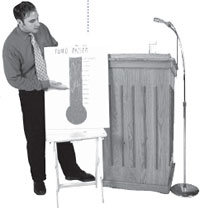

The concept of Essential Skills grew out of a questioning of earlier notions of basic skills, which had most commonly been conceptualized under the broad headings of reading, writing, and numeracy. In the late 1980s, this common conception began to be challenged. The new perspective held that while reading, writing, and numeracy skills are certainly necessary to successful performance, they are not in and of themselves sufficient. Prior to 1993, a number of projects and studies were carried out in Canada, Australia, Great Britain, and the United States, all of them focussed on developing criteria to identify and describe the key abilities that facilitate successful performance in the workplace and in life. However, there were two main inadequacies in the work that had been completed to this point. The first inadequacy was in the focus of the initiatives. Most were centred around the effects of the skills, in other words on what the skills enable a person to achieve, rather than on the skills themselves. The second inadequacy was that levels of ability were not taken into account in the skill descriptions (Jones, 1993 & 1994).
In 1994, Human Resources Development Canada (HRDC) undertook the Essential Skills Research Project (ESRP) with the goal of identifying and cataloguing the skills and abilities that are essential to success in all occupations. In order to describe and document these skills, the ESRP project team devised a set of scales (ES) adapted from the International Adult Literacy Survey (IALS) and the CLB, and drawing on research conducted in Australia (Key Competencies), the United States (Secretary’s Commission on Achieving Necessary Skills), and Great Britain (Adult Literacy and Basic Skills). The ESRP involved over 3,000 interviews aimed at determining how to describe Essential Skills in relation to a range of jobs, professions, and trades.
This research has informed the main activity associated with the ES scales - the development of Essential Skills Profiles (ESP). An ESP is a summary that describes, for a particular occupation, the representative Essential Skills and how a worker would actually apply each of these skills in successfully carrying out job tasks. ESPs are developed through a systematic process that involves interviews with job incumbents within nationally established job categories, referred to as National Occupational Classifications (NOCs). A completed ESP describes a specified range of essential skills and also outlines the complexity requirements for most of those skill areas.
ESPs are used for course and curriculum development in training programs, to inform career decisions and educational choices, and in research projects on employment. Other potential uses suggested for the ESPs include task development, classroom activities, and workplace needs assessment (HRDC, 2003).

In any discussion of Essential Skills, it is important to distinguish between the scales themselves (ES) and the compendium of occupational profiles (ESP) that is being compiled by HRDC. In reviewing literature for this paper, the authors have observed that many writers on the subject do not clearly make this distinction.
The Essential Skills are:
In the ES framework, a skill domain is expressed in terms of complexity levels. For most skills, there are five such levels. It is important to note that the essence of Essential Skills is captured within these complexity ratings. In other words, the ES is really a collection of complexity scales. It is the Essential Skills Profiles that provide example tasks from the workplace based on interview data. An ESP provides examples which depict the representative tasks associated with the Essential Skills that apply to a particular occupation.
Adult educators, workplace trainers, and others turn to ESPs to learn how workers apply their skills in their jobs, while the ES provides the framework for analyzing tasks by skill domain and level of complexity. However, while the occupation provides the background against which Essential Skills examples can be drawn, the Essential Skills themselves are not occupationally specific. In fact, the research is built on the notion that individuals transfer their Essential Skills not just across occupational boundaries, but also across contexts outside the workplace.
The skills that are addressed in the ES framework are defined as “enabling skills” (HRDC, 2003). This means that these skills facilitate an individual’s ability to perform work functions and to carry out other life tasks. These are not the specialized, technical skills required for success on the job, but rather the more general skills that allow workers to learn, to adapt, and to apply their technical knowledge in their everyday lives and in the workplace. The term “enabling” embraces the notion that the Essential Skills are prerequisites to success. For example, many workers have to read and comprehend work orders before they are able to complete repairs or carry out other job responsibilities. In this example, it is the reading and document use skills that enable the worker to apply the necessary job-related knowledge.
Return to note 2 The description of the Essential Skills is excerpted from Stewart, Geraci & Nagy (2004).